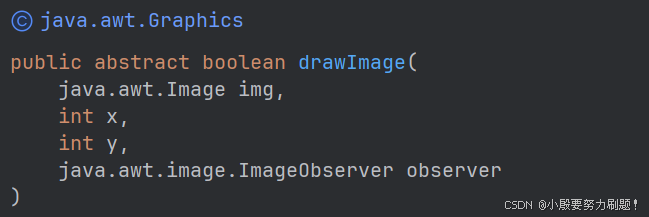GPU-Puzzles项目是一个很棒的学习cuda编程的项目,可以让你学习到GPU编程和cuda核心并行编程的概念,通过一个个小问题让你理解cuda的编程和调用,创建共享显存空间,实现卷积和矩阵乘法等
https://github.com/srush/GPU-Puzzles![]() https://github.com/srush/GPU-Puzzles
https://github.com/srush/GPU-Puzzles
本文是接续我上一篇文章的讲解,深入分析几个比较困难的puzzles,讲解实现和优化原理
,GPU Puzzles讲解(一)-CSDN博客GPU Puzzles是一个很棒的cuda编程学习仓库,本文是对其中题目介绍和思量讲解https://blog.csdn.net/lijj0304/article/details/142737859GPU Puzzles是一个很棒的cuda编程学习仓库,本文是对其中题目介绍和思量讲解https://blog.csdn.net/lijj0304/article/details/142737859
Puzzle 11 - 1D Convolution
Implement a kernel that computes a 1D convolution between a and b and stores it in out. You need to handle the general case. You only need 2 global reads and 1 global write per thread.
实现一维卷积的教学,这里要求控制全局读写次数。一开始很自然的会想到把待卷积的向量和卷积核内容分别存下来。同时考虑到共享内存空间一般和每块的线程数直接关联,而卷积需要乘周围的几个元素,我们需要额外存储边界的几个元素。不仅要在共享内存中存储卷积核的内容,又为了控制到2次的全局读写,这里用了一个trick:即利用不需要存卷积核时的索引去存边界的额外元素
def conv_spec(a, b):
out = np.zeros(*a.shape)
len = b.shape[0]
for i in range(a.shape[0]):
out[i] = sum([a[i + j] * b[j] for j in range(len) if i + j < a.shape[0]])
return out
MAX_CONV = 4
TPB = 8
TPB_MAX_CONV = TPB + MAX_CONV
def conv_test(cuda):
def call(out, a, b, a_size, b_size) -> None:
i = cuda.blockIdx.x * cuda.blockDim.x + cuda.threadIdx.x
local_i = cuda.threadIdx.x
# FILL ME IN (roughly 17 lines)
shared_a = cuda.shared.array(TPB_MAX_CONV, numba.float32)
shared_b = cuda.shared.array(MAX_CONV, numba.float32)
if i < a_size:
shared_a[local_i] = a[i]
if local_i < b_size:
shared_b[local_i] = b[local_i]
else:
local_j = local_i - b_size
if i-b_size+TPB < a_size and local_j < b_size:
shared_a[local_j+TPB] = a[i-b_size+TPB]
cuda.syncthreads()
total = 0.0
for j in range(b_size):
if i+j < a_size:
total += shared_a[local_i+j] * shared_b[j]
if i < a_size:
out[i] = total
return call
# Test 1
SIZE = 6
CONV = 3
out = np.zeros(SIZE)
a = np.arange(SIZE)
b = np.arange(CONV)
problem = CudaProblem(
"1D Conv (Simple)",
conv_test,
[a, b],
out,
[SIZE, CONV],
Coord(1, 1),
Coord(TPB, 1),
spec=conv_spec,
)
problem.show()可视化效果
# 1D Conv (Simple)
Score (Max Per Thread):
| Global Reads | Global Writes | Shared Reads | Shared Writes |
| 2 | 1 | 6 | 2 | 
一维卷积Test2:向量长度超过TPB
out = np.zeros(15)
a = np.arange(15)
b = np.arange(4)
problem = CudaProblem(
"1D Conv (Full)",
conv_test,
[a, b],
out,
[15, 4],
Coord(2, 1),
Coord(TPB, 1),
spec=conv_spec,
)
problem.show()可视化效果
# 1D Conv (Full)
Score (Max Per Thread):
| Global Reads | Global Writes | Shared Reads | Shared Writes |
| 2 | 1 | 8 | 2 | 
Puzzle 12 - Prefix Sum
Implement a kernel that computes a sum over a and stores it in out. If the size of a is greater than the block size, only store the sum of each block.

这个是利用共享内存来计算前缀和,减少访存次数。可以利用两两归并相加的原理,最终结果存储在共享内存块的第1个。利用TPB分割向量长度,输出的out是每一段TPB长度的向量和
TPB = 8
def sum_spec(a):
out = np.zeros((a.shape[0] + TPB - 1) // TPB)
for j, i in enumerate(range(0, a.shape[-1], TPB)):
out[j] = a[i : i + TPB].sum()
return out
def sum_test(cuda):
def call(out, a, size: int) -> None:
cache = cuda.shared.array(TPB, numba.float32)
i = cuda.blockIdx.x * cuda.blockDim.x + cuda.threadIdx.x
local_i = cuda.threadIdx.x
# FILL ME IN (roughly 12 lines)
if i < size:
cache[local_i] = a[i]
else:
cache[local_i] = 0
cuda.syncthreads()
p = 2
while (p <= TPB):
if local_i % p == 0:
cache[local_i] += cache[local_i+p/2]
cuda.syncthreads()
p *= 2
if local_i == 0:
out[cuda.blockIdx.x] = cache[local_i]
return call
# Test 1
SIZE = 8
out = np.zeros(1)
inp = np.arange(SIZE)
problem = CudaProblem(
"Sum (Simple)",
sum_test,
[inp],
out,
[SIZE],
Coord(1, 1),
Coord(TPB, 1),
spec=sum_spec,
)
problem.show()可视化效果
# Sum (Simple)
Score (Max Per Thread):
| Global Reads | Global Writes | Shared Reads | Shared Writes |
| 1 | 1 | 7 | 4 | 
前缀和Test2:
SIZE = 15
out = np.zeros(2)
inp = np.arange(SIZE)
problem = CudaProblem(
"Sum (Full)",
sum_test,
[inp],
out,
[SIZE],
Coord(2, 1),
Coord(TPB, 1),
spec=sum_spec,
)
problem.show()可视化效果
# Sum (Full)
Score (Max Per Thread):
| Global Reads | Global Writes | Shared Reads | Shared Writes |
| 1 | 1 | 7 | 4 | 

Puzzle 13 - Axis Sum
Implement a kernel that computes a sum over each column of a and stores it in out.
其实就是前缀和的运用,这里加入了batch作为列标计,每个batch计算和,out尺寸和bath大小一致
TPB = 8
def sum_spec(a):
out = np.zeros((a.shape[0], (a.shape[1] + TPB - 1) // TPB))
for j, i in enumerate(range(0, a.shape[-1], TPB)):
out[..., j] = a[..., i : i + TPB].sum(-1)
return out
def axis_sum_test(cuda):
def call(out, a, size: int) -> None:
cache = cuda.shared.array(TPB, numba.float32)
i = cuda.blockIdx.x * cuda.blockDim.x + cuda.threadIdx.x
local_i = cuda.threadIdx.x
batch = cuda.blockIdx.y
# FILL ME IN (roughly 12 lines)
if i < size:
cache[local_i] = a[batch, i]
else:
cache[local_i] = 0
cuda.syncthreads()
p = 2
while (p <= TPB):
if local_i % p == 0:
cache[local_i] += cache[local_i+p/2]
cuda.syncthreads()
p *= 2
if local_i == 0:
out[batch, 0] += cache[local_i]
return call
BATCH = 4
SIZE = 6
out = np.zeros((BATCH, 1))
inp = np.arange(BATCH * SIZE).reshape((BATCH, SIZE))
problem = CudaProblem(
"Axis Sum",
axis_sum_test,
[inp],
out,
[SIZE],
Coord(1, BATCH),
Coord(TPB, 1),
spec=sum_spec,
)
problem.show()可视化效果
# Axis Sum
Score (Max Per Thread):
| Global Reads | Global Writes | Shared Reads | Shared Writes |
| 2 | 1 | 7 | 4 | 
Puzzle 14 - Matrix Multiply!
Implement a kernel that multiplies square matrices a and b and stores the result in out.
矩阵乘法实现教学。第一直觉肯定就是利用二维的线程矩阵,循环行列遍历乘积求和。但是会有一个致命的问题就是线程矩阵比实际的矩阵小,而且想要控制全局读取的次数。这时就要利用好二维的共享空间,可以从对应行列出发,按行横向,列竖向顺序取部分的(TPB,TPB)矩阵块然后求乘积。从Test2的可视化图可以很直观看出这个思想
def matmul_spec(a, b):
return a @ b
TPB = 3
def mm_oneblock_test(cuda):
def call(out, a, b, size: int) -> None:
a_shared = cuda.shared.array((TPB, TPB), numba.float32)
b_shared = cuda.shared.array((TPB, TPB), numba.float32)
i = cuda.blockIdx.x * cuda.blockDim.x + cuda.threadIdx.x
j = cuda.blockIdx.y * cuda.blockDim.y + cuda.threadIdx.y
local_i = cuda.threadIdx.x
local_j = cuda.threadIdx.y
# FILL ME IN (roughly 14 lines)
total = 0.0
for k in range(0, size, TPB):
if local_j + k < size and i < size:
a_shared[local_i, local_j] = a[i, local_j+k]
if local_i + k < size and j < size:
b_shared[local_i, local_j] = b[local_i+k, j]
cuda.syncthreads()
for local_k in range(min(TPB, size-k)):
total += a_shared[local_i, local_k] * b_shared[local_k, local_j]
if i < size and j < size:
out[i, j] = total
return call
# Test 1
SIZE = 2
out = np.zeros((SIZE, SIZE))
inp1 = np.arange(SIZE * SIZE).reshape((SIZE, SIZE))
inp2 = np.arange(SIZE * SIZE).reshape((SIZE, SIZE)).T
problem = CudaProblem(
"Matmul (Simple)",
mm_oneblock_test,
[inp1, inp2],
out,
[SIZE],
Coord(1, 1),
Coord(TPB, TPB),
spec=matmul_spec,
)
problem.show(sparse=True)可视化效果
# Matmul (Simple)
Score (Max Per Thread):
| Global Reads | Global Writes | Shared Reads | Shared Writes |
| 2 | 1 | 4 | 2 | 
Test2大于线程矩阵的矩阵乘法:
SIZE = 8
out = np.zeros((SIZE, SIZE))
inp1 = np.arange(SIZE * SIZE).reshape((SIZE, SIZE))
inp2 = np.arange(SIZE * SIZE).reshape((SIZE, SIZE)).T
problem = CudaProblem(
"Matmul (Full)",
mm_oneblock_test,
[inp1, inp2],
out,
[SIZE],
Coord(3, 3),
Coord(TPB, TPB),
spec=matmul_spec,
)
problem.show(sparse=True)可视化效果
# Matmul (Full)
Score (Max Per Thread):
| Global Reads | Global Writes | Shared Reads | Shared Writes |
| 6 | 1 | 16 | 6 | 


















